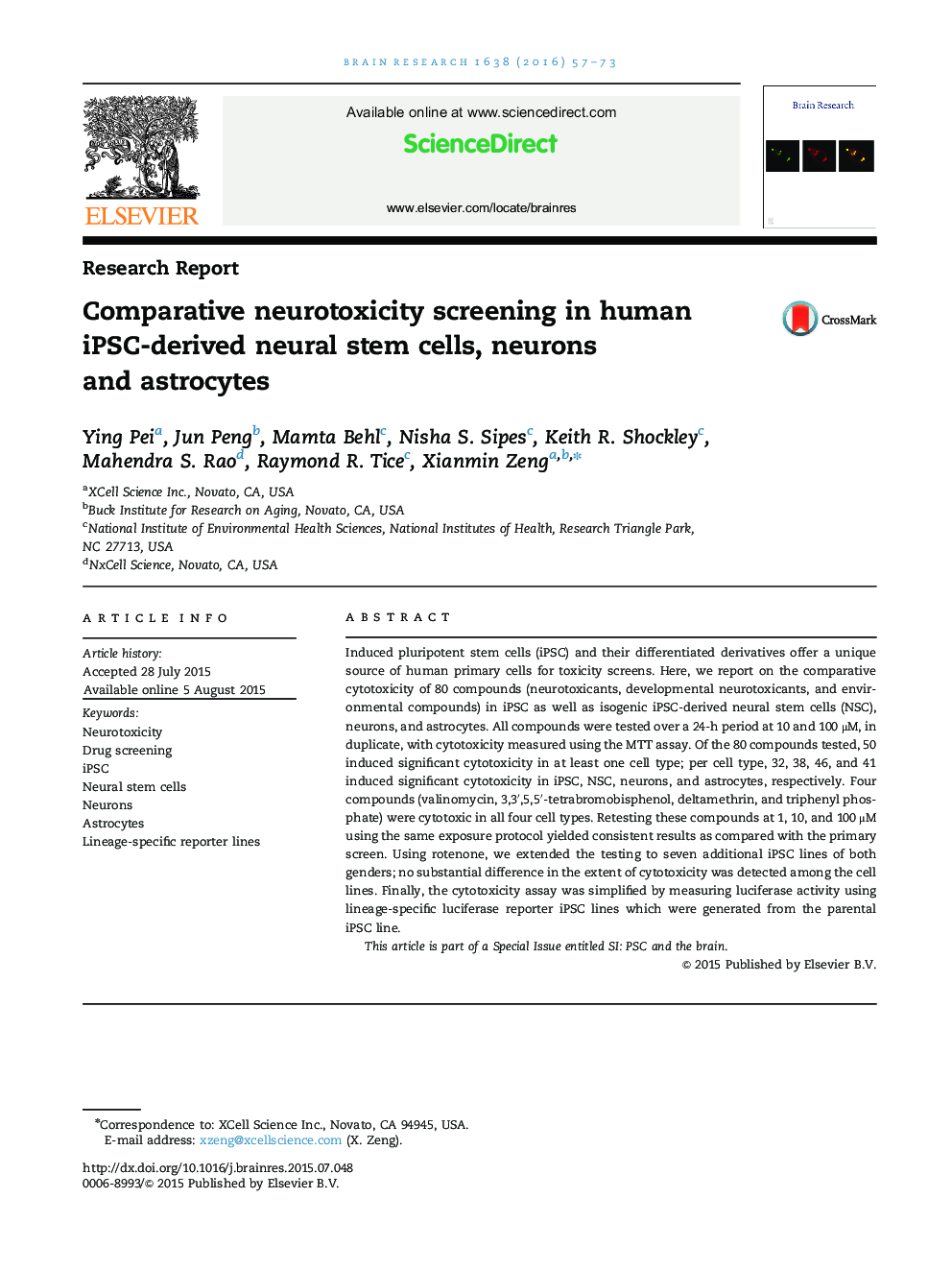| کد مقاله | کد نشریه | سال انتشار | مقاله انگلیسی | نسخه تمام متن |
|---|---|---|---|---|
| 4323661 | 1292364 | 2016 | 17 صفحه PDF | دانلود رایگان |

• Proof-of-concept of using isogenic iPSC-derived neural cells for neurotoxicity assays.
• Cytotoxicity screening of 80 compounds on isogenic cells at four stages of neural differentiation.
• Lineage-specific luciferase reporter iPSC lines was used to simplify the cytotoxicity assay.
Induced pluripotent stem cells (iPSC) and their differentiated derivatives offer a unique source of human primary cells for toxicity screens. Here, we report on the comparative cytotoxicity of 80 compounds (neurotoxicants, developmental neurotoxicants, and environmental compounds) in iPSC as well as isogenic iPSC-derived neural stem cells (NSC), neurons, and astrocytes. All compounds were tested over a 24-h period at 10 and 100 μM, in duplicate, with cytotoxicity measured using the MTT assay. Of the 80 compounds tested, 50 induced significant cytotoxicity in at least one cell type; per cell type, 32, 38, 46, and 41 induced significant cytotoxicity in iPSC, NSC, neurons, and astrocytes, respectively. Four compounds (valinomycin, 3,3′,5,5′-tetrabromobisphenol, deltamethrin, and triphenyl phosphate) were cytotoxic in all four cell types. Retesting these compounds at 1, 10, and 100 μM using the same exposure protocol yielded consistent results as compared with the primary screen. Using rotenone, we extended the testing to seven additional iPSC lines of both genders; no substantial difference in the extent of cytotoxicity was detected among the cell lines. Finally, the cytotoxicity assay was simplified by measuring luciferase activity using lineage-specific luciferase reporter iPSC lines which were generated from the parental iPSC line.This article is part of a Special Issue entitled SI: PSC and the brain.
Journal: Brain Research - Volume 1638, Part A, 1 May 2016, Pages 57–73